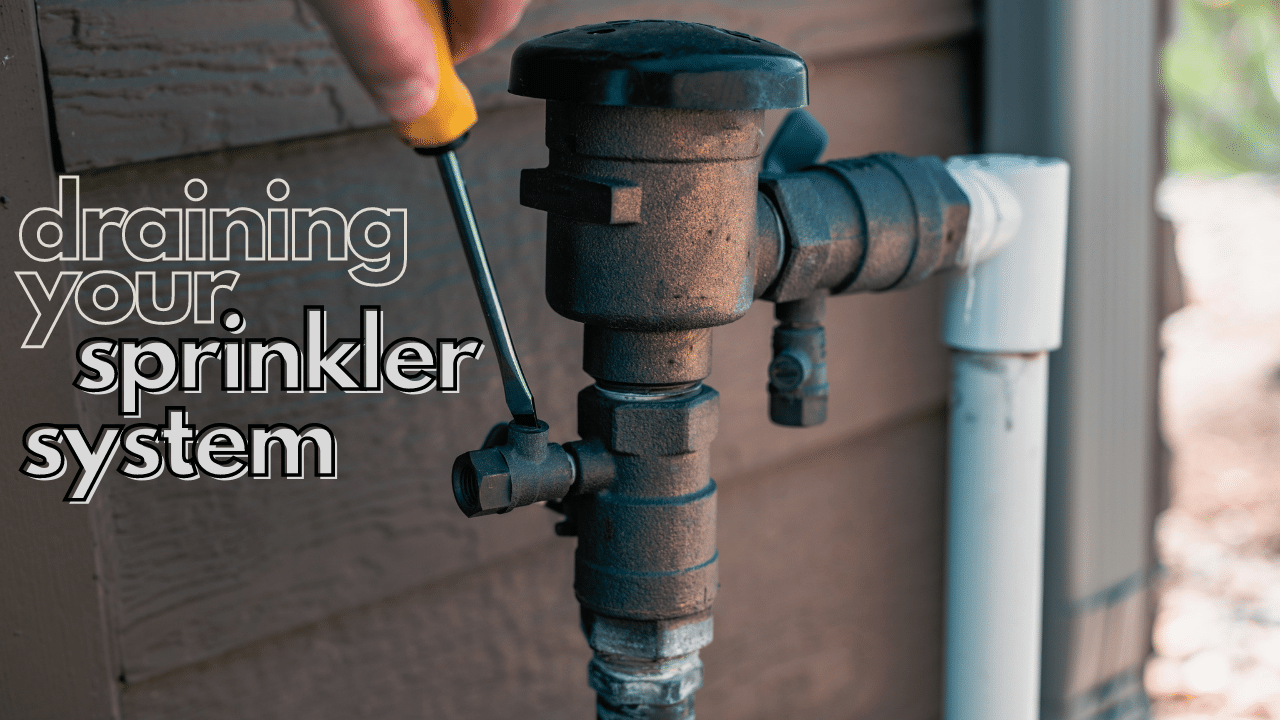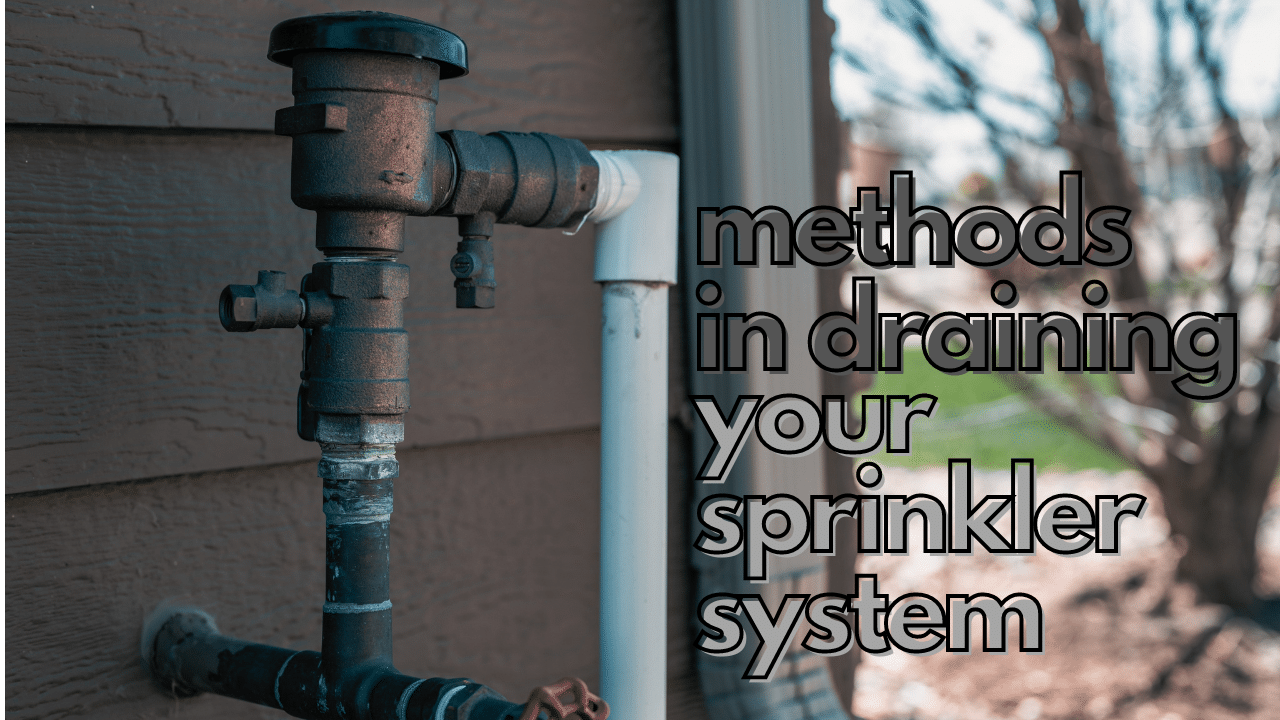My garden means a lot to me if you're like me, and keeping it in good-looking conditions can be difficult. So, especially in the cold weather, I had to find a way to winterize my sprinkler system to avoid getting damaged. Here is how it is possible and what you could potentially do!
The best way possible to ensure your sprinkler system won’t freeze would be to insulate all pipes with insulation foam to protect them from cold weather. Another way to ensure it doesn't freeze up is to drain the lines from any water inside when they aren't in use.
There are many methods to ensure the safety of your sprinkler system during wintertime, but those mentioned above are the most common and work well. However, a sprinkler system is fragile and having the pipes get frozen water might lead to pipes bursting.
Winterizing A Sprinkler System

A sprinkler system can be easily insulated with insulation foam that protects the pipes from cold weather and physical damage. You can buy insulation foam wraps that usually have sticky material inside that can fix the foam onto the tubes, so it isn't lost. This type of insulation should be used for both underground pipes and significantly above.
The irrigation systems pipes can also be insulated using a material other than foam such as tinfoil, reflective insulation material, fiber glass and frost blankets for those extreme dropping temperatures. All of these work perfectly and can prevent any water from freezing up and preserve the quality of your pipes.
After you have insulated your pipes to the point that you are happy and feel safe from the cold, you will need to set up a drainage point. Having a place in your system that can drain the water entirely out of your sprinklers will preserve the pipe's integrity even more. If there is any water in your system from a previous water cycle, it could freeze in the pipes.
The water left inside your pipes can freeze and swell over time if it's not in use, causing blockages in the pipelines, or worse, a burst piped. Now draining your sprinkler system can be done in three ways: using a manual drain valve, an automatic drain valve, or compressed air blowout methods.
It is essential to ensure that all drainage points, overflows, pipe outlets are well insulated, as some people leave these open. Unfortunately, that causes a place where potential water frosting can occur and cause havoc in your system.
Draining Methods

The three main draining methods are a manual drain valve, an automatic drain valve, or using compressed air blowout methods. All three of these effectively stop water from freezing your pipes; however, all three will depend on what you want and your budget.
As it says in its name, manual drain valves are great for someone not looking for a high budget system that takes a lot out of your pocket. A manual drive system has shut off valves either at the bottom of the pipes or at their ends. The valves can be opened manually to release any leftover water that is inside the pipelines. However, take precautions as the pressured water can be dangerous when opened.
Automatic drain valves are similar to the manual system, except it's all rigged to a computerized system that times when to open your drainage valves to release the water. The system can also be activated by running one of the sprinkler heads with the water supply off. The only downside is that water will still be inside after drainage, so you will have to remove it manually.
To remove the water trapped inside the valves, you will need to find the solenoid on each valve; it looks like a plastic cap with wires coming out of the top. Loosen the lids to let air inside of it, which will then force any remainder of water out the pipes
Air compressed drainage methods are a bit more complex and require the proper pipes for it. Some of these systems allow a compressor to hook up onto it and then pump pressurized air, draining the system from water. Again, it is rather advisable to seek professional help with this method rather than do it on your own.
Why Does Winter Cause Problems
The cold weather is one of the most common causes of pipes bursting in households and outside. So the question is, how come the cold weather specifically, and how does it make the pipes crack or splinter, which leads to you taking out a lot of money to get repaired or wholly replaced?
Water is an exciting molecule that, once looked at in-depth, has small spaces between it to keep it together and in motion. However, once it starts to freeze, those molecules expand, creating bigger spaces apart from one another. The freezing happens across your pipeline until all available room to fill can't be filled anymore, creating pressure.
In simpler terms, whatever leftover water was used for wetting the garden or grass starts to freeze, it causes problems. The freezing water pipes then rupture as the water inside swells when turning into ice, applying a lot of pressure onto the pipes from the inside. It can also occur when the water starts to melt or thaw; the additional stress then cracks or bursts the pipes.
The temperature you should be looking out for is anywhere below 32 degrees Fahrenheit; that's when you can see problems occur in sprinkler systems that aren't drained or insulated against the cold. So keep an eye out, and as soon as you see the temperature dip, go check out your irrigation system.
Conclusion
The key to a sprinkler system that is winterized and ready for the cold weather is just simple insulation around your pipes and draining your sprinkler system from any remainder of the water inside. The insulation would take care of most weather cases and not extreme cold temperatures that might freeze water and cause the pipes to burst.
All it takes is a little bit of research into what insulation you want to use and the drainage method that suits your budget. Then, of course, you could go expensive and high grade, but that's if you're going to automate it all and sit back.
